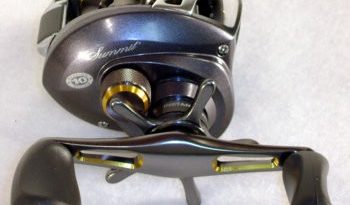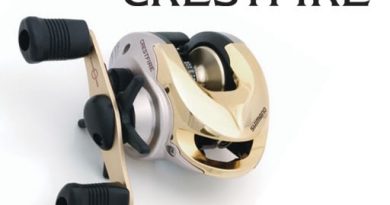How to Choose the Right Baitcasting Reel
How to Choose the Right Baitcasting Reel
Choose the Right Baitcasting Reel is just like the rest of the fishing gear available on the market, baitcasting reel come in a wide array of options, quality, and components. There are a few simple characteristics, however, that can be easily learned by the beginner, and which will aid enormously in correctly choosing the right baitcasting reel. Some of the more important characteristics to pay attention to are body material and construction, bearing material and construction, and the turn ratio of the crank. Quality does make a difference.
Many people think that baitcasting reel are for more experienced fishermen, but that is not necessarily the case anymore. Many of the reel available on the market today are of such high quality that even a beginner fisherman can easily master the techniques and uses of a baitcasting reel.
The body of a baitcasting reel is normally made of one of two types of material: aluminum or graphite. Graphite reel are lightweight and highly resistant to corrosion, which makes these reel particularly useful in a saltwater fishing environment due to the high salinity of the water. Graphite is, however not quite as strong or durable as aluminum. If you want to chase after those giant marlins or tuna, then you will probably want to opt for the aluminum reel because of their strength. On the other hand, if you are only after crappie or other panfish, then a graphite bodied reel at may just be the right choice for you.
Another important consideration when looking for a baitcasting reel is the ball bearings or bushings inside the reel. These are the components of the reel that have the most direct impact on the smoothness and “feel” of the reel. As a general rule, stainless steel ball bearings are preferable to bushings. Shimano Reels have a great Anti-Rust Bearing in the majority of their reel. Usually, the more ball bearings the unit contains, the smoother the cranking will be. Smooth cranking is essential for a good fishing reel of any type, so that you can feel the action of the line in the water and whether or not you have a fish on the line. Baitcasting reel come with a range of ball bearing counts, usually from two to six. Two bearings would be an absolute minimum, while the fisherman should purchase a reel at with the most amount of bearings his budget will allow for. Usually, the more bearings a reel at contains, the more expensive the reel will be.
Choose the Right Baitcasting Reel
A further consideration for choosing a good baitcasting reel is the turn ratio of the crank. Baitcasting reel at come with a variety of turn ratio’s raging from 2:1, all the way to 7:1. Daiwa has released a hyper-fast reel with the Daiwa TD Zillion Coastal 7.3 baitcasting reel. The first number refers to the number of turns of the crank, while the second number refers to the number of times the spool rotates. For example 7:1 means that for every turn of the crank the spool turns 7 times, which is obviously a very high cranking power. Trolling, bottom bouncing, and jig working are good application for high cranking power, while bank fishing and general line hanging are better suited to low cranking power. For a good middle of the road number, choose a 4:1 ratio.
Other factors that should be considered when choosing a baitcasting reel at include the drag system, casting controls, and specialized reel at for particular species of fish. For more information on these advanced characteristics be sure to visit Shimano Baitcasting Reel Reviews and Daiwa Baitcasting Reel Reviews




